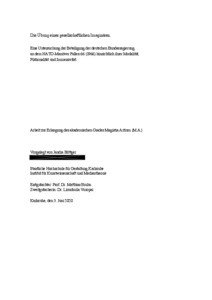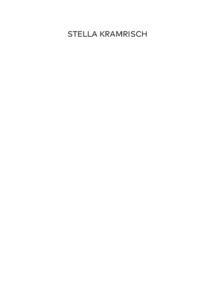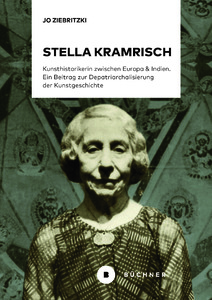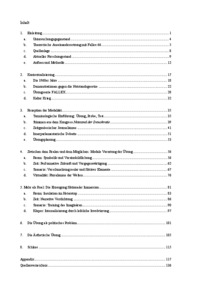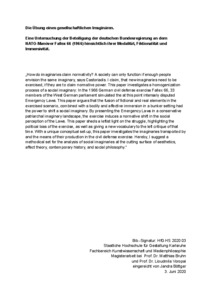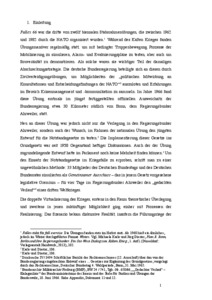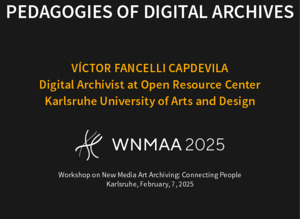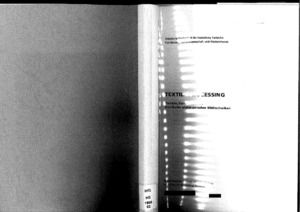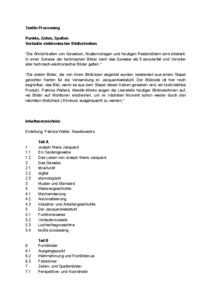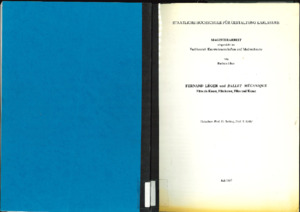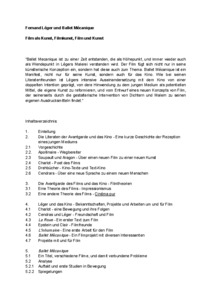"Theorie"
| Begriff | Theorie |
| Metakey | Kategorie (institution:project_category) |
| Typ | Keyword |
| Vokabular | HfG |
65 Inhalte
- Seite 1 von 6
Die Übung eines gesellschaftlichen Imaginären Deckblatt
- Titel
- Die Übung eines gesellschaftlichen Imaginären Deckblatt
- Untertitel
- Eine Untersuchung der Beteiligung der deutschen Bundesregierung an dem NATO-Manöver Fallex 66 (1966) hinsichtlich ihrer Modalität, Fiktionalität und Immersivität.
- Autor/in
- Beschreibung (de)
- „Fallex 66 war die dritte von zwölf biennalen Stabsrahmenübungen, die zwischen 1962 und 1982 durch die NATO organisiert wurden. Während des Kalten Krieges fanden Übungsmanöver regelmäßig statt, um mit bedingter Truppenbewegung Prozesse der Mobilisierung zu simulieren, Alarm- und Evakuierungspläne zu testen, aber auch um
Souveränität zu demonstrieren. Als solche waren sie wichtiger Teil der damaligen Abschreckungsstrategie. Die deutsche Bundesregierung beteiligte sich an diesen durch
Zivilverteidigungsübungen, um Möglichkeiten der „politischen Mitwirkung an Konsultationen und Entscheidungsfindungen der NATO auszuloten und Erfahrungen im Bereich Krisenmanagement und -kommunikation zu sammeln. Im Jahre 1966 fand diese Übung erstmals im jüngst fertiggestellten offiziellen Ausweichsitz der Bundesregierung etwa 30 Kilometer südlich von Bonn, dem Regierungsbunker Ahrweiler, statt.Neu an dieser Übung war jedoch nicht nur die Verlegung in den Regierungsbunker Ahrweiler, sondern auch der Wunsch, im Rahmen der nationalen Übung den jüngsten Entwurf für die Notstandsgesetze zu testen [...] Um den Einsatz der Notstandsgesetze im Kriegsfalle zu erproben, schritt man zu einer ungewöhnlichen Methode: 33 Mitglieder des Deutschen Bundestags und des Deutschen Bundesrates simulierten als Gemeinsamer Ausschuss – das in jenem Gesetz vorgesehene legislative Gremium – für vier Tage im Regierungsbunker Ahrweiler den „gedachten Verlauf“ eines dritten Weltkrieges.”
„Die Sorge, dass durch die Implementierung der Notstandsgesetze ein Hebel zur Totalisierung des Staates juristischen Niederschlag im Grundgesetz finden könnte, wurde dabei durch das ungewöhnliche Verfahren der Übung in dem sich durch Abschottung auszeichnenden Bunker noch verstärkt. Der Aufenthalt der PolitikerInnen wurde so nicht nur Übung der Notstandsgesetze, sondern auch Symbol einer intransparent agierenden Politik. [...] Wie ich zeigen werde, werden auch der Raum der Übung und die TeilnehmerInnen selbst zu einem fiktionstragenden Medium. Deswegen stellt die Übung eine nicht-rationale, sondern affektiv und ästhetisch wirkende Form der Wissensvermittlung dar.”
- „Fallex 66 war die dritte von zwölf biennalen Stabsrahmenübungen, die zwischen 1962 und 1982 durch die NATO organisiert wurden. Während des Kalten Krieges fanden Übungsmanöver regelmäßig statt, um mit bedingter Truppenbewegung Prozesse der Mobilisierung zu simulieren, Alarm- und Evakuierungspläne zu testen, aber auch um
- Beschreibung (en)
- „How do imaginaries claim normativity? A society can only function if enough people envision the same imaginary, says Castoriadis. I claim, that new imaginaries need to be exercised, if they are to claim normative power. This paper investigates a homogenization process of a social imaginary: In the 1966 German civil defense exercise Fallex 66, 33 members of the West German parliament simulated the at this point intensely disputed Emergency Laws. This paper argues that the fusion of fictional and real elements in the exercised scenario, combined with a bodily and affective immersion in a bunker setting had the power to shift a social imaginary. By presenting the Emergency Laws in a conservative patriarchal imaginary landscape, the exercise induces a normative shift in the social perception of the Laws. This paper sheds a leftist light on the struggle, highlighting the political bias of the exercise, as well as giving a new vocabulary to the left critique of that time. With a unique conceptual set-up, this paper investigates the imaginaries transported by and the means of their production in the civil defense exercise. Hereby, I suggest a methodical set for the analysis of social imaginaries at the cutting surface of aesthetics, affect theory, contemporary history, and social philosophy.”
- Kategorie
- Schlagworte
- Datierung
- 03.06.2020
- Sprache
- Ort: Institution
- Titel
- Die Übung eines gesellschaftlichen Imaginären Deckblatt
- Urheberrechtshinweis
- © Jandra Böttger
- Rechtsschutz/Lizenz
- Freigabe Nutzung HfG
- Medienersteller/in
- Beziehung/Funktion
- Projektleiter/in
- Semester
- Studiengang
- Typ der Abschlussarbeit
- Archiv-Signatur
- HfG HS 2020 03
- Externes Archiv
- Importiert am
- 03.11.2025
- Übergeordnete Sets
- 1
Stella Kramrisch. Kunsthistorikerin zwischen Europa und Indien: Einleitung
- Titel
- Stella Kramrisch. Kunsthistorikerin zwischen Europa und Indien: Einleitung
- Autor/in
- Kategorie
- Typ des Projekts/Werks
- Titel
- Stella Kramrisch. Kunsthistorikerin zwischen Europa und Indien: Einleitung
- Urheberrechtshinweis
- © Jo Ziebritzki. Die Reproduktion als Druckerzeugnis ist untersagt.
- Rechtsschutz/Lizenz
- Freigabe Nutzung HfG
- Medienersteller/in
- Beziehung/Funktion
- Projektleiter/in
- Semester
- Studiengang
- Typ der Abschlussarbeit
- Importiert am
- 28.07.2025
- Übergeordnete Sets
- 1
Stella Kramrisch. Kunsthistorikerin zwischen Europa und Indien.
- Titel
- Stella Kramrisch. Kunsthistorikerin zwischen Europa und Indien.
- Autor/in
- Kategorie
- Typ des Projekts/Werks
- Titel
- Stella Kramrisch. Kunsthistorikerin zwischen Europa und Indien.
- Urheberrechtshinweis
- © Jo Ziebritzki
- Rechtsschutz/Lizenz
- Freigabe Nutzung HfG
- Medienersteller/in
- Beziehung/Funktion
- Projektleiter/in
- Semester
- Studiengang
- Typ der Abschlussarbeit
- Importiert am
- 28.07.2025
- Übergeordnete Sets
- 1
Die Übung eines gesellschaftlichen Imaginären Inhaltsverzeichnis
- Titel
- Die Übung eines gesellschaftlichen Imaginären Inhaltsverzeichnis
- Untertitel
- Eine Untersuchung der Beteiligung der deutschen Bundesregierung an dem NATO-Manöver Fallex 66 (1966) hinsichtlich ihrer Modalität, Fiktionalität und Immersivität.
- Autor/in
- Beschreibung (de)
- „Fallex 66 war die dritte von zwölf biennalen Stabsrahmenübungen, die zwischen 1962 und 1982 durch die NATO organisiert wurden. Während des Kalten Krieges fanden Übungsmanöver regelmäßig statt, um mit bedingter Truppenbewegung Prozesse der Mobilisierung zu simulieren, Alarm- und Evakuierungspläne zu testen, aber auch um
Souveränität zu demonstrieren. Als solche waren sie wichtiger Teil der damaligen Abschreckungsstrategie. Die deutsche Bundesregierung beteiligte sich an diesen durch
Zivilverteidigungsübungen, um Möglichkeiten der „politischen Mitwirkung an Konsultationen und Entscheidungsfindungen der NATO auszuloten und Erfahrungen im Bereich Krisenmanagement und -kommunikation zu sammeln. Im Jahre 1966 fand diese Übung erstmals im jüngst fertiggestellten offiziellen Ausweichsitz der Bundesregierung etwa 30 Kilometer südlich von Bonn, dem Regierungsbunker Ahrweiler, statt.Neu an dieser Übung war jedoch nicht nur die Verlegung in den Regierungsbunker Ahrweiler, sondern auch der Wunsch, im Rahmen der nationalen Übung den jüngsten Entwurf für die Notstandsgesetze zu testen [...] Um den Einsatz der Notstandsgesetze im Kriegsfalle zu erproben, schritt man zu einer ungewöhnlichen Methode: 33 Mitglieder des Deutschen Bundestags und des Deutschen Bundesrates simulierten als Gemeinsamer Ausschuss – das in jenem Gesetz vorgesehene legislative Gremium – für vier Tage im Regierungsbunker Ahrweiler den „gedachten Verlauf“ eines dritten Weltkrieges.”
„Die Sorge, dass durch die Implementierung der Notstandsgesetze ein Hebel zur Totalisierung des Staates juristischen Niederschlag im Grundgesetz finden könnte, wurde dabei durch das ungewöhnliche Verfahren der Übung in dem sich durch Abschottung auszeichnenden Bunker noch verstärkt. Der Aufenthalt der PolitikerInnen wurde so nicht nur Übung der Notstandsgesetze, sondern auch Symbol einer intransparent agierenden Politik. [...] Wie ich zeigen werde, werden auch der Raum der Übung und die TeilnehmerInnen selbst zu einem fiktionstragenden Medium. Deswegen stellt die Übung eine nicht-rationale, sondern affektiv und ästhetisch wirkende Form der Wissensvermittlung dar.”
- „Fallex 66 war die dritte von zwölf biennalen Stabsrahmenübungen, die zwischen 1962 und 1982 durch die NATO organisiert wurden. Während des Kalten Krieges fanden Übungsmanöver regelmäßig statt, um mit bedingter Truppenbewegung Prozesse der Mobilisierung zu simulieren, Alarm- und Evakuierungspläne zu testen, aber auch um
- Beschreibung (en)
- „How do imaginaries claim normativity? A society can only function if enough people envision the same imaginary, says Castoriadis. I claim, that new imaginaries need to be exercised, if they are to claim normative power. This paper investigates a homogenization process of a social imaginary: In the 1966 German civil defense exercise Fallex 66, 33 members of the West German parliament simulated the at this point intensely disputed Emergency Laws. This paper argues that the fusion of fictional and real elements in the exercised scenario, combined with a bodily and affective immersion in a bunker setting had the power to shift a social imaginary. By presenting the Emergency Laws in a conservative patriarchal imaginary landscape, the exercise induces a normative shift in the social perception of the Laws. This paper sheds a leftist light on the struggle, highlighting the political bias of the exercise, as well as giving a new vocabulary to the left critique of that time. With a unique conceptual set-up, this paper investigates the imaginaries transported by and the means of their production in the civil defense exercise. Hereby, I suggest a methodical set for the analysis of social imaginaries at the cutting surface of aesthetics, affect theory, contemporary history, and social philosophy.”
- Kategorie
- Schlagworte
- Datierung
- 03.06.2020
- Sprache
- Ort: Institution
- Titel
- Die Übung eines gesellschaftlichen Imaginären Inhaltsverzeichnis
- Urheberrechtshinweis
- © Jandra Böttger
- Rechtsschutz/Lizenz
- Freigabe Nutzung HfG
- Medienersteller/in
- Beziehung/Funktion
- Projektleiter/in
- Semester
- Studiengang
- Typ der Abschlussarbeit
- Archiv-Signatur
- HfG HS 2020 03
- Externes Archiv
- Importiert am
- 30.03.2025
- Übergeordnete Sets
- 1
Die Übung eines gesellschaftlichen Imaginären Abstract (updated)
- Titel
- Die Übung eines gesellschaftlichen Imaginären Abstract (updated)
- Untertitel
- Eine Untersuchung der Beteiligung der deutschen Bundesregierung an dem NATO-Manöver Fallex 66 (1966) hinsichtlich ihrer Modalität, Fiktionalität und Immersivität.
- Autor/in
- Beschreibung (de)
- „Fallex 66 war die dritte von zwölf biennalen Stabsrahmenübungen, die zwischen 1962 und 1982 durch die NATO organisiert wurden. Während des Kalten Krieges fanden Übungsmanöver regelmäßig statt, um mit bedingter Truppenbewegung Prozesse der Mobilisierung zu simulieren, Alarm- und Evakuierungspläne zu testen, aber auch um
Souveränität zu demonstrieren. Als solche waren sie wichtiger Teil der damaligen Abschreckungsstrategie. Die deutsche Bundesregierung beteiligte sich an diesen durch
Zivilverteidigungsübungen, um Möglichkeiten der „politischen Mitwirkung an Konsultationen und Entscheidungsfindungen der NATO auszuloten und Erfahrungen im Bereich Krisenmanagement und -kommunikation zu sammeln. Im Jahre 1966 fand diese Übung erstmals im jüngst fertiggestellten offiziellen Ausweichsitz der Bundesregierung etwa 30 Kilometer südlich von Bonn, dem Regierungsbunker Ahrweiler, statt.Neu an dieser Übung war jedoch nicht nur die Verlegung in den Regierungsbunker Ahrweiler, sondern auch der Wunsch, im Rahmen der nationalen Übung den jüngsten Entwurf für die Notstandsgesetze zu testen [...] Um den Einsatz der Notstandsgesetze im Kriegsfalle zu erproben, schritt man zu einer ungewöhnlichen Methode: 33 Mitglieder des Deutschen Bundestags und des Deutschen Bundesrates simulierten als Gemeinsamer Ausschuss – das in jenem Gesetz vorgesehene legislative Gremium – für vier Tage im Regierungsbunker Ahrweiler den „gedachten Verlauf“ eines dritten Weltkrieges.”
„Die Sorge, dass durch die Implementierung der Notstandsgesetze ein Hebel zur Totalisierung des Staates juristischen Niederschlag im Grundgesetz finden könnte, wurde dabei durch das ungewöhnliche Verfahren der Übung in dem sich durch Abschottung auszeichnenden Bunker noch verstärkt. Der Aufenthalt der PolitikerInnen wurde so nicht nur Übung der Notstandsgesetze, sondern auch Symbol einer intransparent agierenden Politik. [...] Wie ich zeigen werde, werden auch der Raum der Übung und die TeilnehmerInnen selbst zu einem fiktionstragenden Medium. Deswegen stellt die Übung eine nicht-rationale, sondern affektiv und ästhetisch wirkende Form der Wissensvermittlung dar.”
- „Fallex 66 war die dritte von zwölf biennalen Stabsrahmenübungen, die zwischen 1962 und 1982 durch die NATO organisiert wurden. Während des Kalten Krieges fanden Übungsmanöver regelmäßig statt, um mit bedingter Truppenbewegung Prozesse der Mobilisierung zu simulieren, Alarm- und Evakuierungspläne zu testen, aber auch um
- Beschreibung (en)
- „How do imaginaries claim normativity? A society can only function if enough people envision the same imaginary, says Castoriadis. I claim, that new imaginaries need to be exercised, if they are to claim normative power. This paper investigates a homogenization process of a social imaginary: In the 1966 German civil defense exercise Fallex 66, 33 members of the West German parliament simulated the at this point intensely disputed Emergency Laws. This paper argues that the fusion of fictional and real elements in the exercised scenario, combined with a bodily and affective immersion in a bunker setting had the power to shift a social imaginary. By presenting the Emergency Laws in a conservative patriarchal imaginary landscape, the exercise induces a normative shift in the social perception of the Laws. This paper sheds a leftist light on the struggle, highlighting the political bias of the exercise, as well as giving a new vocabulary to the left critique of that time. With a unique conceptual set-up, this paper investigates the imaginaries transported by and the means of their production in the civil defense exercise. Hereby, I suggest a methodical set for the analysis of social imaginaries at the cutting surface of aesthetics, affect theory, contemporary history, and social philosophy.”
- Kategorie
- Schlagworte
- Datierung
- 03.06.2020
- Sprache
- Ort: Institution
- Titel
- Die Übung eines gesellschaftlichen Imaginären Abstract (updated)
- Urheberrechtshinweis
- © Jandra Böttger
- Rechtsschutz/Lizenz
- Freigabe Nutzung HfG
- Medienersteller/in
- Beziehung/Funktion
- Projektleiter/in
- Semester
- Studiengang
- Typ der Abschlussarbeit
- Archiv-Signatur
- HfG HS 2020 03
- Externes Archiv
- Importiert am
- 31.03.2025
- Übergeordnete Sets
- 1
Die Übung eines gesellschaftlichen Imaginären Einleitung
- Titel
- Die Übung eines gesellschaftlichen Imaginären Einleitung
- Untertitel
- Eine Untersuchung der Beteiligung der deutschen Bundesregierung an dem NATO-Manöver Fallex 66 (1966) hinsichtlich ihrer Modalität, Fiktionalität und Immersivität.
- Autor/in
- Beschreibung (de)
- „Fallex 66 war die dritte von zwölf biennalen Stabsrahmenübungen, die zwischen 1962 und 1982 durch die NATO organisiert wurden. Während des Kalten Krieges fanden Übungsmanöver regelmäßig statt, um mit bedingter Truppenbewegung Prozesse der Mobilisierung zu simulieren, Alarm- und Evakuierungspläne zu testen, aber auch um
Souveränität zu demonstrieren. Als solche waren sie wichtiger Teil der damaligen Abschreckungsstrategie. Die deutsche Bundesregierung beteiligte sich an diesen durch
Zivilverteidigungsübungen, um Möglichkeiten der „politischen Mitwirkung an Konsultationen und Entscheidungsfindungen der NATO auszuloten und Erfahrungen im Bereich Krisenmanagement und -kommunikation zu sammeln. Im Jahre 1966 fand diese Übung erstmals im jüngst fertiggestellten offiziellen Ausweichsitz der Bundesregierung etwa 30 Kilometer südlich von Bonn, dem Regierungsbunker Ahrweiler, statt.Neu an dieser Übung war jedoch nicht nur die Verlegung in den Regierungsbunker Ahrweiler, sondern auch der Wunsch, im Rahmen der nationalen Übung den jüngsten Entwurf für die Notstandsgesetze zu testen [...] Um den Einsatz der Notstandsgesetze im Kriegsfalle zu erproben, schritt man zu einer ungewöhnlichen Methode: 33 Mitglieder des Deutschen Bundestags und des Deutschen Bundesrates simulierten als Gemeinsamer Ausschuss – das in jenem Gesetz vorgesehene legislative Gremium – für vier Tage im Regierungsbunker Ahrweiler den „gedachten Verlauf“ eines dritten Weltkrieges.”
„Die Sorge, dass durch die Implementierung der Notstandsgesetze ein Hebel zur Totalisierung des Staates juristischen Niederschlag im Grundgesetz finden könnte, wurde dabei durch das ungewöhnliche Verfahren der Übung in dem sich durch Abschottung auszeichnenden Bunker noch verstärkt. Der Aufenthalt der PolitikerInnen wurde so nicht nur Übung der Notstandsgesetze, sondern auch Symbol einer intransparent agierenden Politik. [...] Wie ich zeigen werde, werden auch der Raum der Übung und die TeilnehmerInnen selbst zu einem fiktionstragenden Medium. Deswegen stellt die Übung eine nicht-rationale, sondern affektiv und ästhetisch wirkende Form der Wissensvermittlung dar.”
- „Fallex 66 war die dritte von zwölf biennalen Stabsrahmenübungen, die zwischen 1962 und 1982 durch die NATO organisiert wurden. Während des Kalten Krieges fanden Übungsmanöver regelmäßig statt, um mit bedingter Truppenbewegung Prozesse der Mobilisierung zu simulieren, Alarm- und Evakuierungspläne zu testen, aber auch um
- Beschreibung (en)
- „How do imaginaries claim normativity? A society can only function if enough people envision the same imaginary, says Castoriadis. I claim, that new imaginaries need to be exercised, if they are to claim normative power. This paper investigates a homogenization process of a social imaginary: In the 1966 German civil defense exercise Fallex 66, 33 members of the West German parliament simulated the at this point intensely disputed Emergency Laws. This paper argues that the fusion of fictional and real elements in the exercised scenario, combined with a bodily and affective immersion in a bunker setting had the power to shift a social imaginary. By presenting the Emergency Laws in a conservative patriarchal imaginary landscape, the exercise induces a normative shift in the social perception of the Laws. This paper sheds a leftist light on the struggle, highlighting the political bias of the exercise, as well as giving a new vocabulary to the left critique of that time. With a unique conceptual set-up, this paper investigates the imaginaries transported by and the means of their production in the civil defense exercise. Hereby, I suggest a methodical set for the analysis of social imaginaries at the cutting surface of aesthetics, affect theory, contemporary history, and social philosophy.”
- Kategorie
- Schlagworte
- Datierung
- 03.06.2020
- Sprache
- Ort: Institution
- Titel
- Die Übung eines gesellschaftlichen Imaginären Einleitung
- Urheberrechtshinweis
- © Jandra Böttger
- Rechtsschutz/Lizenz
- Freigabe Nutzung HfG
- Medienersteller/in
- Beziehung/Funktion
- Projektleiter/in
- Semester
- Studiengang
- Typ der Abschlussarbeit
- Archiv-Signatur
- HfG HS 2020 03
- Externes Archiv
- Importiert am
- 30.03.2025
- Übergeordnete Sets
- 1
Pedagogies of digital archives
- Titel
- Pedagogies of digital archives
- Autor/in
- Beschreibung (de)
- Präsentation von Víctor Fancelli Capdevila, Digital Archivist beim ORC für der Schwerpunkt Connecting People im Rahmen des Workshop on New Media Art Archiving 2025, ein 3-Tägige Workshop, die in Februar 2025 in ZKM stattfand.
- Beschreibung (en)
- Presentation by Víctor Fancelli Capdevila, Digital Archivist at ORC for Connecting People part of the Workshop on New Media Art Archiving 2025, a 3-day workshop that took place in February 2025 at ZKM.
- Kategorie
- Typ des Projekts/Werks
- Schlagworte
- Datierung
- 07.02.2025
- Mitwirkende
- Dank an
- Sprache
- Technik/Verfahren/Formate
- Reveal.js
- Ort: Institution
- Ort
- ZKM Medientheater
- Stadt
- Land
- Beteiligte Institution(en)
- Internetlinks
- Titel
- Pedagogies of digital archives
- Titel (en)
- Pedagogies of digital archives
- Urheberrechtshinweis
- Víctor Fancelli Capdevila
- Rechtsschutz/Lizenz
- Medienersteller/in
- Beziehung/Funktion
- Medien-Beschreibung
- Präsentation für den Workshop on New Media Art Archiving: Connecting People
- Medien-Beschreibung (en)
- Presentation for the Workshop on New Media Art Archiving: Connecting People
- Importiert am
- 11.02.2025
- Übergeordnete Sets
- 1
Pedagogies of digital archives
- Titel
- Pedagogies of digital archives
- Autor/in
- Beschreibung (de)
- Präsentation von Víctor Fancelli Capdevila, Digital Archivist beim ORC für der Schwerpunkt Connecting People im Rahmen des Workshop on New Media Art Archiving 2025, ein 3-Tägige Workshop, die in Februar 2025 in ZKM stattfand.
- Beschreibung (en)
- Presentation by Víctor Fancelli Capdevila, Digital Archivist at ORC for Connecting People part of the Workshop on New Media Art Archiving 2025, a 3-day workshop that took place in February 2025 at ZKM.
- Kategorie
- Typ des Projekts/Werks
- Schlagworte
- Datierung
- 07.02.2025
- Mitwirkende
- Dank an
- Sprache
- Technik/Verfahren/Formate
- Reveal.js
- Ort: Institution
- Ort
- ZKM Medientheater
- Stadt
- Land
- Beteiligte Institution(en)
- Internetlinks
- Titel
- Pedagogies of digital archives
- Titel (en)
- Pedagogies of digital archives
- Urheberrechtshinweis
- Víctor Fancelli Capdevila
- Rechtsschutz/Lizenz
- Medienersteller/in
- Beziehung/Funktion
- Medien-Beschreibung
- Präsentation für den Workshop on New Media Art Archiving: Connecting People
- Medien-Beschreibung (en)
- Presentation for the Workshop on New Media Art Archiving: Connecting People
- Importiert am
- 11.02.2025
- Übergeordnete Sets
- 1
Textile Processing Deckblatt
- Titel
- Textile Processing Deckblatt
- Autor/in
- Beschreibung (de)
- „Die Ähnlichkeiten von Geweben, Mustervorlagen und heutigen Rasterbildern sind eklatant. In einer Genese der technischen Bilder kann das Gewebe als Exemplarfall und Vorreiter aller technisch-elektronischer Bilder gelten.”
„Die ersten Bilder, die von ihrem Bildkörper abgelöst wurden, bestanden aus einem Stapel gelochter Karten für die Verwendung im Jacquardwebstuhl. Der Bildcode ist hier noch begreifbar, das Bild, wenn es aus dem Stapel dieser Karten gewoben wird, ein textil-taktiles Produkt. Patricia Wallers Needle-Works zeigen die Leerstelle heutiger Bildmaschinen auf, wo Bilder auf Monitoren erscheinen, um im nächsten Moment schon wieder durch den nächsten (Netzhaut-) Eindruck ausgetauscht zu werden.”
- „Die Ähnlichkeiten von Geweben, Mustervorlagen und heutigen Rasterbildern sind eklatant. In einer Genese der technischen Bilder kann das Gewebe als Exemplarfall und Vorreiter aller technisch-elektronischer Bilder gelten.”
- Beschreibung (en)
- “The similarities between fabrics, patterns and today's raster images are striking. In the genesis of technical images, the fabric can be regarded as an exemplary case and forerunner of all technical-electronic images.”
“The first images that were detached from their image body consisted of a stack of perforated cards for use in the Jacquard loom. The image code is still comprehensible here, the image, when woven from the pile of these cards, is a textile-tactile product. Patricia Waller's needle works show the blank space of today's image machines, where images appear on monitors only to be replaced by the next (retinal) impression in the very next moment.”
- “The similarities between fabrics, patterns and today's raster images are striking. In the genesis of technical images, the fabric can be regarded as an exemplary case and forerunner of all technical-electronic images.”
- Kategorie
- Typ des Projekts/Werks
- Schlagworte
- Datierung
- 02.11.1998
- Sprache
- Ort: Institution
- Stadt
- Titel
- Textile Processing Deckblatt
- Urheberrechtshinweis
- Birgit Schneider
- Rechtsschutz/Lizenz
- Medienersteller/in
- Beziehung/Funktion
- Projektleiter/in
- Semester
- Studiengang
- Typ der Abschlussarbeit
- Archiv-Signatur
- HfG HS 1998 02
- Externes Archiv
- Importiert am
- 09.01.2025
- Übergeordnete Sets
- 1
Textile Processing
- Titel
- Textile Processing
- Untertitel
- Punkte, Zeilen, Spalten; Vorläufer elektronischer Bildtechniken
- Autor/in
- Beschreibung (de)
- „Die Ähnlichkeiten von Geweben, Mustervorlagen und heutigen Rasterbildern sind eklatant. In einer Genese der technischen Bilder kann das Gewebe als Exemplarfall und Vorreiter aller technisch-elektronischer Bilder gelten.”
„Die ersten Bilder, die von ihrem Bildkörper abgelöst wurden, bestanden aus einem Stapel gelochter Karten für die Verwendung im Jacquardwebstuhl. Der Bildcode ist hier noch begreifbar, das Bild, wenn es aus dem Stapel dieser Karten gewoben wird, ein textil-taktiles Produkt. Patricia Wallers Needle-Works zeigen die Leerstelle heutiger Bildmaschinen auf, wo Bilder auf Monitoren erscheinen, um im nächsten Moment schon wieder durch den nächsten (Netzhaut-) Eindruck ausgetauscht zu werden.”
- „Die Ähnlichkeiten von Geweben, Mustervorlagen und heutigen Rasterbildern sind eklatant. In einer Genese der technischen Bilder kann das Gewebe als Exemplarfall und Vorreiter aller technisch-elektronischer Bilder gelten.”
- Beschreibung (en)
- “The similarities between fabrics, patterns and today's raster images are striking. In the genesis of technical images, the fabric can be regarded as an exemplary case and forerunner of all technical-electronic images.”
“The first images that were detached from their image body consisted of a stack of perforated cards for use in the Jacquard loom. The image code is still comprehensible here, the image, when woven from the pile of these cards, is a textile-tactile product. Patricia Waller's needle works show the blank space of today's image machines, where images appear on monitors only to be replaced by the next (retinal) impression in the very next moment.”
- “The similarities between fabrics, patterns and today's raster images are striking. In the genesis of technical images, the fabric can be regarded as an exemplary case and forerunner of all technical-electronic images.”
- Kategorie
- Typ des Projekts/Werks
- Schlagworte
- Datierung
- 02.11.1998
- Sprache
- Ort: Institution
- Stadt
- Titel
- Textile Processing
- Urheberrechtshinweis
- Brigit Schneider
- Rechtsschutz/Lizenz
- Freigabe Nutzung HfG
- Medienersteller/in
- Beziehung/Funktion
- Projektleiter/in
- Semester
- Studiengang
- Typ der Abschlussarbeit
- Archiv-Signatur
- HfG HS 1998 02
- Externes Archiv
- Importiert am
- 04.08.2023
- Übergeordnete Sets
- 1
Fernand Léger und Ballet Mécanique (Deckblatt)
- Titel
- Fernand Léger und Ballet Mécanique (Deckblatt)
- Autor/in
- Beschreibung (de)
- "Ballet Mecanique ist zu einer Zeit entstanden, die als Höhepunkt, und immer wieder auch als Wendepunkt in Légers Malerei verstanden wird. Der Film fügt sich nicht nur in seine künstlerische Konzeption ein, sondern hat diese auch zum Thema. Ballet Mécanique ist ein Manifest, nicht nur für seine Kunst, sondern auch für das Kino. Wie bei seinen Literatenfreunden ist Légers intensive Auseinandersetzung mit dem Kino von einer doppelten Intention geprägt, von dere Hinwendung zu dem jungen Medium als potentiellen Mittel, die eigene Kunst zu reformieren, und vom Entwurf eines neuen Konzepts von Film, der seinerseits durch die gestalterische Intervention von Dichtern und Malern zu seinen eigenen Ausdrucksmitteln findet."
- Beschreibung (en)
- "Ballet Mecanique was created at a time that is seen as a high point, and repeatedly as a turning point, in Léger's painting. The film not only fits into his artistic conception, but also has it as its theme. Ballet Mécanique is a manifesto, not only for his art, but also for the cinema. As with his literary friends, Léger's intensive engagement with the cinema is characterisedby a dual intention: a turn towards the young medium as a potential means of reforming his own art, and the creation of a new concept of film, which in turn finds its own means of expression through the creative intervention of poets and painters."
- Kategorie
- Typ des Projekts/Werks
- Schlagworte
- Datierung
- Juli 1997
- Sprache
- Ort: Institution
- Titel
- Fernand Léger und Ballet Mécanique (Deckblatt)
- Urheberrechtshinweis
- Barbara Filser
- Rechtsschutz/Lizenz
- Freigabe Nutzung HfG
- Medienersteller/in
- Projektleiter/in
- Semester
- Studiengang
- Typ der Abschlussarbeit
- Archiv-Signatur
- HfG HS 1997 02
- Externes Archiv
- Importiert am
- 20.02.2025
- Übergeordnete Sets
- 1
Fernand Léger und Ballet Mécanique (Inhaltsverzeichnis)
- Titel
- Fernand Léger und Ballet Mécanique (Inhaltsverzeichnis)
- Untertitel
- Film als Kunst, Filmkunst, Film und Kunst
- Autor/in
- Beschreibung (de)
- "Ballet Mecanique ist zu einer Zeit entstanden, die als Höhepunkt, und immer wieder auch als Wendepunkt in Légers Malerei verstanden wird. Der Film fügt sich nicht nur in seine künstlerische Konzeption ein, sondern hat diese auch zum Thema. Ballet Mécanique ist ein Manifest, nicht nur für seine Kunst, sondern auch für das Kino. Wie bei seinen Literatenfreunden ist Légers intensive Auseinandersetzung mit dem Kino von einer doppelten Intention geprägt, von dere Hinwendung zu dem jungen Medium als potentiellen Mittel, die eigene Kunst zu reformieren, und vom Entwurf eines neuen Konzepts von Film, der seinerseits durch die gestalterische Intervention von Dichtern und Malern zu seinen eigenen Ausdrucksmitteln findet."
- Beschreibung (en)
- "Ballet Mecanique was created at a time that is seen as a high point, and repeatedly as a turning point, in Léger's painting. The film not only fits into his artistic conception, but also has it as its theme. Ballet Mécanique is a manifesto, not only for his art, but also for the cinema. As with his literary friends, Léger's intensive engagement with the cinema is characterisedby a dual intention: a turn towards the young medium as a potential means of reforming his own art, and the creation of a new concept of film, which in turn finds its own means of expression through the creative intervention of poets and painters."
- Kategorie
- Schlagworte
- Datierung
- Juli 1997
- Sprache
- Ort: Institution
- Stadt
- Titel
- Fernand Léger und Ballet Mécanique (Inhaltsverzeichnis)
- Urheberrechtshinweis
- Barbara Filser
- Rechtsschutz/Lizenz
- Freigabe Nutzung HfG
- Medienersteller/in
- Beziehung/Funktion
- Projektleiter/in
- Semester
- Studiengang
- Typ der Abschlussarbeit
- Archiv-Signatur
- HfG HS 1997 02
- Externes Archiv
- Importiert am
- 03.08.2023
- Übergeordnete Sets
- 1
